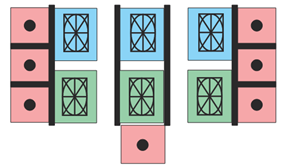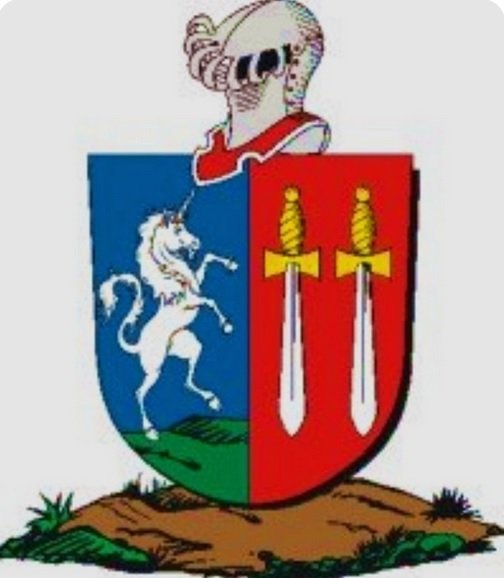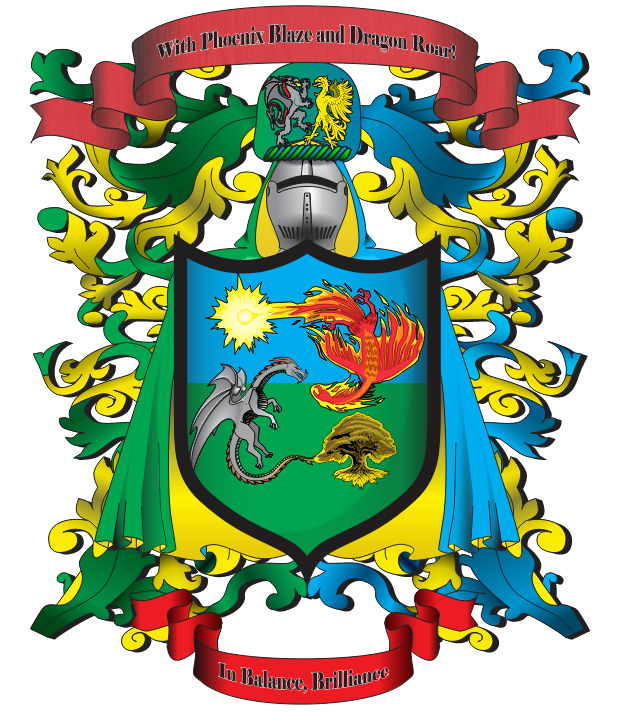The structure of the Hadokai Tubatonona (HT) language is quite a bit different from English. One of the main differences is the object subject verb (OSV) format of the sentences, which is not unheard of in most languages, but it is definitely in the minority. The second major difference is the handling of the primary subject, which is different than all other nouns within the sentence structure.. With this in mind, the idea is that the Tubatonona were very explicitly focused on the creations or outcomes rather than who did it or how it was done.
While I have distinct ideas of how this culture developed producing this unique language structure, and at some point, I will be developing the Tubatonona culture, currently, I am focusing on the language (Hadokai).
Sentence structure is similar to transposing most English structures, though not all of the structures. As you will see when we get to the primary subject and verb, the structure gets complicated by the linking of the primary subject to the verb.
Using the standard symbols used by Chomsky Hierarchy, which allows those that can already understand this notation to do so without the explaination of the symbols.. Those that need a short primer for them, you may read on, otherwise jump down the page to S → Imp | Int | [Cnd] Objs Subjs [Tm] Vbs ClPunc
The symbols and structures for Chomsky makes understanding the way language interacts, and though I have been told that there are flaws in the methodology, I believe it will suffice for these purposes
.The arrow (→) is read as “leads to” or “contains,” which indicates it is defined with the following components. We write a sentence that contains only a subject and a verb thusly:
S → Subj Vrb
The pipe symbol (|) indicates “or,” and though it would not make sense, we could define a sentence that contains either a subject or a verb or both:
S → Subj | Vrb | Subj Vrb
Square brackets denote an optional part. Adding the object to the previous construct:
S → [Obj] Subj | [Obj] Vrb | [Obj] Subj Vrb
Parenthesis denote a set of elements, typically similar in nature in some way. In the following Objs leads to either a pronoun and optional secondary nouns or a primary object. This is followed by an optional secondary object. For instance, “He she and”, “The girls the dogs and”
Objs → (PNoun [SPNoun] | PO) [SO]
The plus symbol fro appending of one element directly to another element, as in a suffix or prefix.:
PV → [primary verb] [VerbSuffixes] [PSAdjSuffixes] [PSPluralInd] [NegSuf] [PVCCAV] [PSCCA]
If we have a recursive phrase, say a prepositional phrase (PP), we can recurse so that one prepositional phrase can include another and another and another. This is done by including the structure being defined in the structure we are defining. With P equivalent to a preposition and PP equivalent to a prepositional phrase, the structure begins to take shape.
In the HT structure, I will not define the preposition, and we will assume we can figure out what a preposition is or should be. Including an adjective and a determiner (a, an, the, etc.), we get:
PP → [PP] Adj Det P
Finally, we have the end, epsilon, or empty, where we need to close the PP. Otherwise, it continues to add more PP ad infinitum. The “ε” added as an “or” condition allows the option to finish the structure.
PP → [PP] Adj Det P | ε
Naturally, the sentence structure (generically) in the Chomsky Hierarchy format is:
S → Imp | Int | [Cnd] Objs Subjs [Tm] Vbs ClPunc
Reading this, we can see that the sentence leads to (is comprised of) an “imperative” OR an “interrogative” OR the group of the following: an optional “condition,” a mandatory object phrase, a mandatory subject phrase, an optional “time” indicator, a mandatory verb phrase, and finally the closing punctuation.
Imp – Imperatives
Int – Interrogatives
Cnd – Optional Conditionals
ObjP – Object Phrase
SubjP – Subject Phrase
Tm – Optional Time indicators
VbP – Verb Phrase
ClPunc – Closing punctuation
Imp
Imp (Imperative) is the word used to emphasize the imperative or command; in English, this would be “Hey!”, “You!”, “Get over here!”. So, technically, this might be a word or a short phrase, but the entire sentence is surrounded by imperative punctuation.
This would be similar in nature to “!Hey!” or “!Stop doing that!”
The structure for imperative (Imp) is defined as the punctuation followed by the imperative phrase followed by the punctuation:
Imp → ImpPunc ImpP ImpPunc | ε
ImpPunc → aʧ
ImpP → Objs ImpP | Subjs ImpP | Tm ImpP | Vbs ImpP | ε
We can define a sentence with a single word:
English: You!
HT: aʧ dena aʧ
Broken down, we see the exclamation word, “de” (as the second person indicator) with the “na” suffix (specifying the singular nature of “de”) and finally the exclamation word, again. It could also be “aʧ deno aʧ” if we were referring to “you” as a group.
Int
Int (Interrogative) references the question, query, or interrogative. It is similar to how I sometimes preface a question with “question” like “Question, how do I explain this, so that everyone can understand?”
The structure is similar to Imp but is much more robust and allows for complete sentences within the query, but prefacing it with an appropriate “ya” word.
The punctuation for questions is “yaɪʤ” and will always both open and close the sentence.
Int → IntPunc IntW IntP IntPunc | ε
IntPunc → yaɪʤ
IntW → yaba | yabo| yadoh| yapensa| yatuna| yauʧ | yazu | ya + N | ya + V
IntP → Objs IntP | Subjs IntP | Tm IntP | Vbs IntP | ε
yaɪʤ yazu de bakana yaɪʤ (In English: “When will you create?” in direct translation “?When – second person – create – singular?”)
yaɪʤ (interrogative punctuation) yazu (interrogative word, when de (second person indicator word, either “you” or “you all” depending on the ending suffix on the verb, “na” or “no”) bakana (to create, and the plurality indicator for de. “na” is singular and “no” is plural) yaɪʤ (closing interrogative punctuation)
ClPunc
ClPunc (Closing Punctuation) is currently the only other “stop” character for sentences, and if the sentence is not imperative or interrogative, it must end in the “aʒ.”
ClPunc → aʒ
Example: Tu bakana aʒ (first person – create – singular suffix, “I create.”)
Cond
Cond (Conditional) is the conditional word for the sentence, and as you can see by the brackets, it is optional.
The conditionals are words like “if,” “then,” or “therefore.” In HT structure, the conditional conjunctions would be transposed “then-if,” as the outcome is paramount.
An English example might be, “If you place your hand on the stove, then you will get burned.” In HT, structures are transposed: “Then you will get burned if you place your hand on the stove.”
The conditional can get complicated; however, for this explanation, I am going to keep it simple and then, at the end, touch on the complexities this introduces. The Cond contains the CndConjP (Conditional Conjunctive Phrase). This will contain all of the possible options at some point in the future, but for now, we are showing it as having three conditional conjunction types: Temporal Sequence (having to do with time and sequences that are not reliant upon a conditional action), Logical (used to show cause and effect), and Conditional (used to show the if/then statements), the conditional conjunctions act as the “then” part of the, and the “if” part is played by the SubConj (subordinating conjunction).
Cond → CndConjP | SubConj
CndConjP → TempConj | LogConj | CondConj
TempConj → zuel
LogConj → el
CondConj →
SubConj → TempSubConj | LogSubConj | CondSubConj
TempSubConj → yazu
LogSubConj → ɪm
CondSubConj → at
Conditional Conjunctions can get quite a bit more complicated, especially in English. The ability to use a phrase would make the conditional section more robust but a lot more complicated, as it would need to define how the words and phrases are structured, when they can be used, and all of the very minute niceties that would come along with that.
Examples:
Temporal:
English: When the sun rises, then we will go outside. (the sun rising is going to happen, so it is temporal and not reliant upon a condition being met.)
HT: zuel aldavudoh tu geno aʃ yazu ro zuta ʧufa aʒ (literally: Then we go to the good life, area when the day becomes light.)
Logical:
English: There was no light, therefore we could not see.
HT: el tu lininoku aʃ roku rafa vuna aʒ (literally: Therefore we not see, no light there exists.)
Conditional:
English: You can go outside, provided it is light out.
HT: at aldavudoh ropɪta aʃ aldavudoh tu gena aʒ (literally: if outside lighter, outside you go.)
Objs
Objs (Objects) is a list of the objects that comprise the object phrases, and is made up of nouns, adjectives, and prepositional phrases. This can get quite a bit more complicated, with recursion and subordinate clauses and a lot of other things I will just gloss over.
HT always starts with the object, the thing, or the idea we’re talking about. For example, using “Jo” for rock. We can add details to it, like “Joalʧa” for the blue rock or “Joalʧaku” for not the blue rock. Objects and their qualities are central to HT.
The Objects are defined recursively, but typical sentences will typically not exceed three deep, but in some cases, they can. In the structure, we see the primary object (PO) first; as HT focuses on objects and outcomes, the primary object is the focus of the sentence. The secondary (SO) objects follow the primary, with the secondary objects defining the recursive nature.
The primary object comes first, but the structure defines it along with any adjective suffixes, the plural indicator, any negation suffixes, as well as both complex compound adjectives (CCA) and prepositional phrases (PP). The rest of the structure should start to be more apparent as you get used to looking at the structures from previous areas.
The primary object is comprised of a noun or a pronoun appended by any suffixes or prefixes. The only one I can think of right now is zu, which is time, so it may not apply, but I have added it here for possible use.
Compound complex adjectives are words used to describe the nouns, and as noted, can be complex, built up from other words that would indicate the attributes of the noun.
The noun phrase comprises the central portion of the object and includes the determiner, if any, the noun, and any adjective phrases and prepositional phrases if needed.
Almost any word can be used as a modifier for other words as long as there is context that indicates the intent.
Objs → (PNoun [SPNoun] | PO) [SO]
PNoun → (tu | de | no) [+ (fa | fe | fi | fo}]
SPNoun → PNoun [SPNoun + ConjSuffix] | ε
ConjSuffix → ʧe
PO → [ModPrefixes +] N [+ AdjSuffixes] [+ PluralInd] [+ NegSuf] [CCA] [PP]
ModPrefixes → zu | ε
AdjSuffixes → AdjSuf [+ AdjSuffixes] | ε
PluralInd → na | no | [fa | fe | fi | fo] | ε
NegSuf → ku | ε
CCA → Adj [+ AdjSuffixes] | ε
PP → NP P | ε
NP → [Det] [AdjP] N [PP]
SO → [ModPrefixes] N [AdjSuffixes] [PluralInd] [NegSuf] [CCA] [PP] [SO] ConjSuffix | ε
Detailed Descriptions and Modifiers: Objects and subjects can be described in detail, with modifiers for size, color, and more. For example, “Emanresuku” negates the subject “Emanre” in “Emanresuku lona” (Emanre is not the one throwing).
Subjs
Subjs are the actual subjects of the sentence; the primary subject of the sentence is a stand-alone noun without adjective suffixes, plural, complex compound adjectives, or prepositional phrases.
The secondary subjects do not follow the primary subject format. They follow the object format.
Thus, the secondary and subsequent subjects are defined with all of the amenities that would be associated with the noun in question, just as the objects were. Only the primary subject is treated differently.
Notice that in both objects and subjects, the conjunction is denoted by the subsequent object or nouns and not with the primary. “Ball and glove” turns into “ball glove and” when placed in HT order.
The last thing that is different between subjects and objects is the order of placement. In objects, it is similar to English. “this, that, and the other” in HT, it is The other, that, and this.
Subjs → [SS] | PS
SS → [secondary subject] [+ AdjSuffixes] [+ PluralInd] [+ NegSuf] [CCA] [PP] Conj [SS]| ε
PS → [primary subject] [+ NegSuf]
Tm
Tm (Time) can come between the primary object and the primary verb. Time indicators such as “zubava” (which literally means “the past” ) can stand for any of these and more: previously, just prior to now, a moment ago.
English: Resua with Emanre just previously were jumping.
HT: Resuae Emanresu zubava zualno aʒ
We might consider this like the tense portion of the sentence, where the tense of the verbs is non-existent because we specify the tense before the verb. I kind of like that idea.
Time can also be negated, so that the following becomes:
English: Resua with Emanre just previously not were jumping.
HT: Resuae Emaresu zubovaku zualno aʒ
Vbs
Vbs (Verbs) are the verbs and verb phrases and are the most complex structure we have in the sentence.
A lot of this has been somewhat covered in the earlier parts, but this defines the principal part of the “originality” of the language.
The verbs, like the primary subject, use the Secondary Verb first before the Primary verb.
HT: Resua zubava ɪbvie navana dohnair aʒ – literally “Resua sat and ran the house into.”
English: Resua ran into the house and sat.
Or we could say:
HT: Resua ɪbvie navana dohnair aʒ – literally “Resua sits and runs the house into.”
English: Resua runs into the house and sits.
In this sentence, the noun “ɪb” is suffixed with “vi,” turning it into a verb and again suffixed with “e” to denote “with.” The verb “nava” is suffixed with the “na,” indicating a singular subject. Finally, “dohna” is suffixed with “ir,” indicating “within, into, or inside”.
As we look at the structure of the Vbs, we see that the primary verb gets complicated, as it is suffixed with any verb-specific suffixes. It then shifts to suffixes that go with the primary subject, adjectives, plurality indicator, and then the negation.
Once primary subject suffixes have been applied, we shift to complex compound adverbs for the verb, which are recursive.
Primary subject complex compound adjectives are next, then lastly (and finally) primary subject prepositional phrases.
Vbs → SV | PV
SV → [secondary verb(s)] [AdvSuffixMods] | ε
AdvSuffixMods → [adverb suffix modifiers] [Neg] | ε
PV → [primary verb] [+ VerbSuffixes] [+ PSAdjSuffixes] [+ PSPluralInd] [+ NegSuf] [PVCCAV] [PSCCA]
VerbSuffixes → [primary verb suffixes] | ε
PSAdjSuffixes → [primary subject adjective suffixes] [AdjSuffixes] | ε
PSPluralInd → [primary subject plurality indicator suffix] [PluralInd] | ε
PVCCAV → [primary verb complex compound adverbs] [CCAV] | ε
PSCCA → [primary subject complex compound adjectives] [CCA] | ε
PSPP → [primary subject prepositional phrases] [NP] [P] | ε
NP → [noun phrase]
Det → [determiner (a, the, an, etc.)]
AdjP → [adjective phrase and any modifiers of adjectives] | ε
N → [noun]
PP → [preposition phrase (recursive)] | ε
P → [preposition]
Complex Sentences and Cultural Nuances: HT sentences can have multiple parts, each following the object-subject-verb order. The language reflects the cultural values, often focusing on tangible aspects (objects) more than the actions or agents (verbs or subjects).
Following OSV in all phrases. One exception to the OSV order is in HT poetry and prose. When developing a flourished writing of any kind, most structural conventions are thrown out the window, regardless of the language, or the structure that language uses.
Let’s look at a couple final example sentences:
HT: “ʤoalʧa Emanresu bakana aʒ”
Here, “ʤoalʧa” (the blue rock) is the object, “Emanresu” (by Emanre) is the subject, and “bakana” (creates) is the verb. The sentence ends with “aʒ,” marking the end of the sentence.
HT: ʤu alʧaku magiroʧaku tuna tunafizavutogaroʧae lolupifozavutogaroʧa aʒ
English: The old gray man, with the old gray woman, juggles quickly with not blue or yellow rocks.
HT: ropensam aldagirodae aʒ
English: In Balance, Brilliance
HT: liniva magomakva dokzezu puraze lini likulinialgibetiir aʒ
English: The vista of a boundless horizon reaching far in the hazy distance.
HT: zubava bana zufova pensam aʒ
English: Inscribe the past and know the future.
This structure shows how HT uniquely structures thoughts, emphasizing outcomes and the tangible aspects of the world. I imagine as I start to define the type of culture, they placed emphasis on the products of their lives.
The concept I am working with is that the Tubatonona were literally tasked with the creation of the mystical items which would maintain balance within this cosmic “sphere” of existence.

























